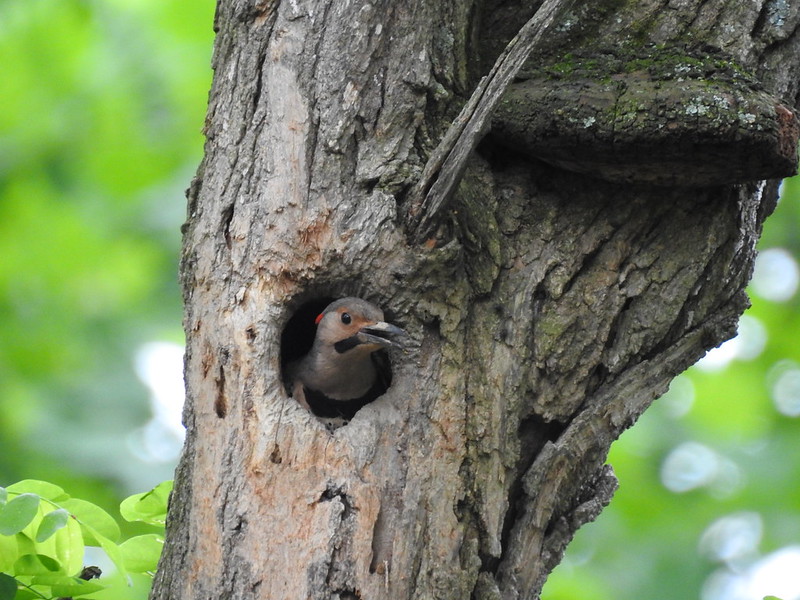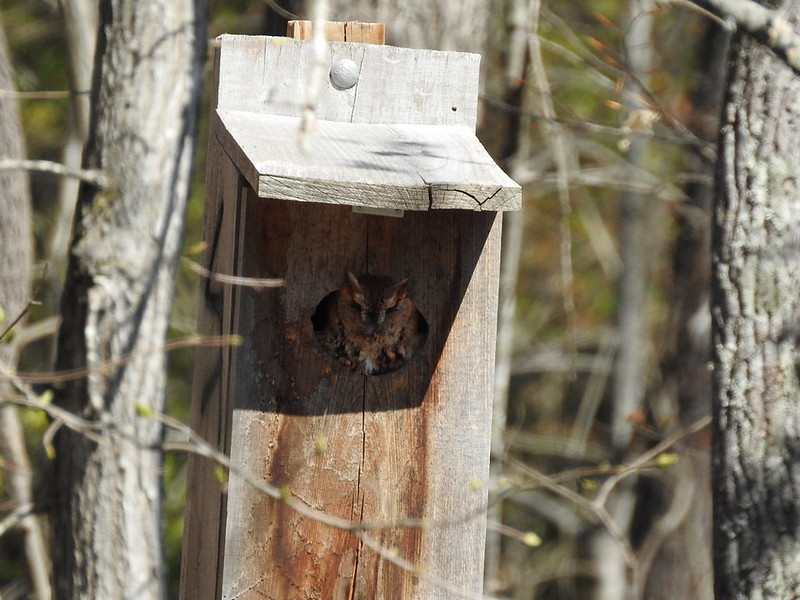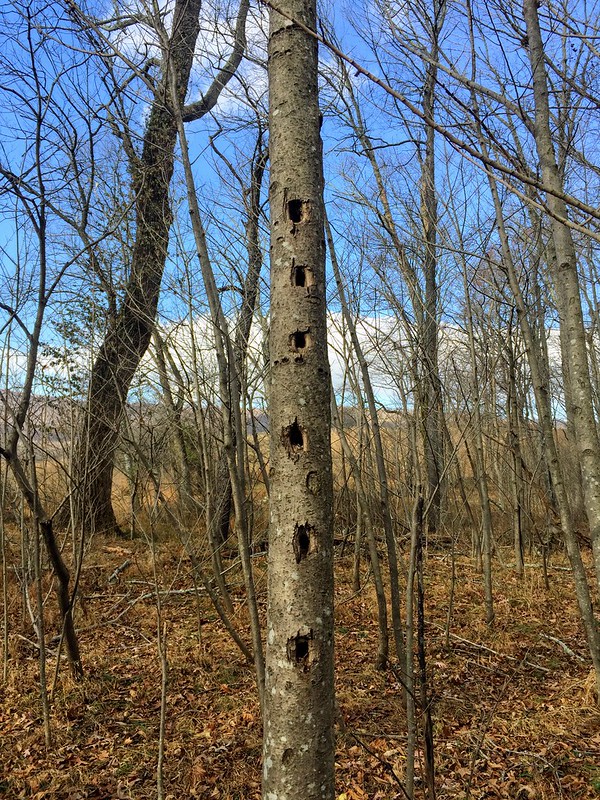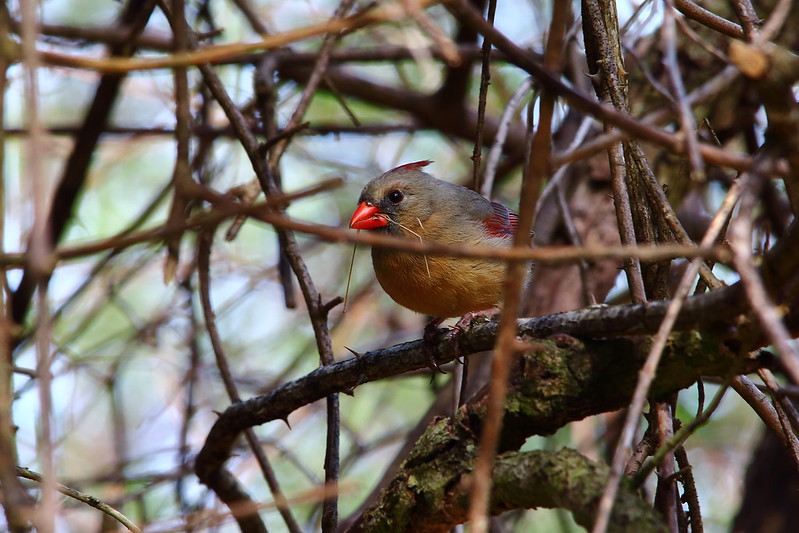Read Our Blogs
Backyard birding – shelters
Birds need shelter from predators and extreme weather to feel safe and secure. Adding bird-friendly shelters can be an easy way to attract more birds to your yard, offering better opportunities to observe birds in their natural habitat.

Many birds take shelter in tree cavities, such as this Northern Flicker.
Birds are equipped to survive in specific habitats. Creating a variety of habitats for shelter will make your yard more appealing to birds. Offering a habitat that provides safety, weather protection and food will help ensure birds survive and thrive in your environment.

An Eastern Screech Owl enjoys an artificial shelter designed for her.
There are two types of shelter you can offer your feathered friends – natural and artificial. Natural shelters include native trees, shrubs, brush piles, tall grasses and tree cavities. These will provide both food and protection. Native trees and shrubs are hosts to insects, which are a plentiful food supply to birds. Tall grasses offer seeds and camouflage. Brush piles also create camouflage and a protective barrier from predators. Dead trees, or stags, can offer cavities for nesting, shelter from the elements and supply of insects for food. They provide a food source, shelter and nesting sites for a variety of birds.

Tree stags are an important element in an ecosystem.
Create a brush pile by collecting fallen tree branches and twigs of different sizes. This can include logs or trimmings from trees and shrubs. Use the largest branches or logs as a foundation and pile the smaller branches on top. Continue adding branches in layers leaving openings for birds to get in and out. Do not pack the branches too tightly.

Creating a brush pile from branches and twigs creates a safe space for birds.
The artificial shelter can include a large variety of birdhouses, buildings, structures and human-made features that offer protection. Variety is key to attracting the most species to your yard. Owls need different bird boxes than bluebirds, for example, so provide several types of houses of varying sizes and shapes. Many birds will find their own shelter in barns, sheds and chimneys. You may find that a pair of wrens are happier building a nest under your deck than using a store-bought birdhouse hanging from a tree.
Editor's Note:
If you missed Jessica's earlier posts on backyard birding, find them here:
Backyard birding – getting started
If you have read the article and have a question, please email nancy.heltman@dcr.virginia.gov.
Search for blogs
By Park
Categories
Cabins
Camping
Fishing
History and Culture
Other
Programs and Events
Trails
Volunteers
Water Fun
Archive
2025
2024
2023
2022
2021
2020
2019
2018
2017
2016
2015
2014
2012













